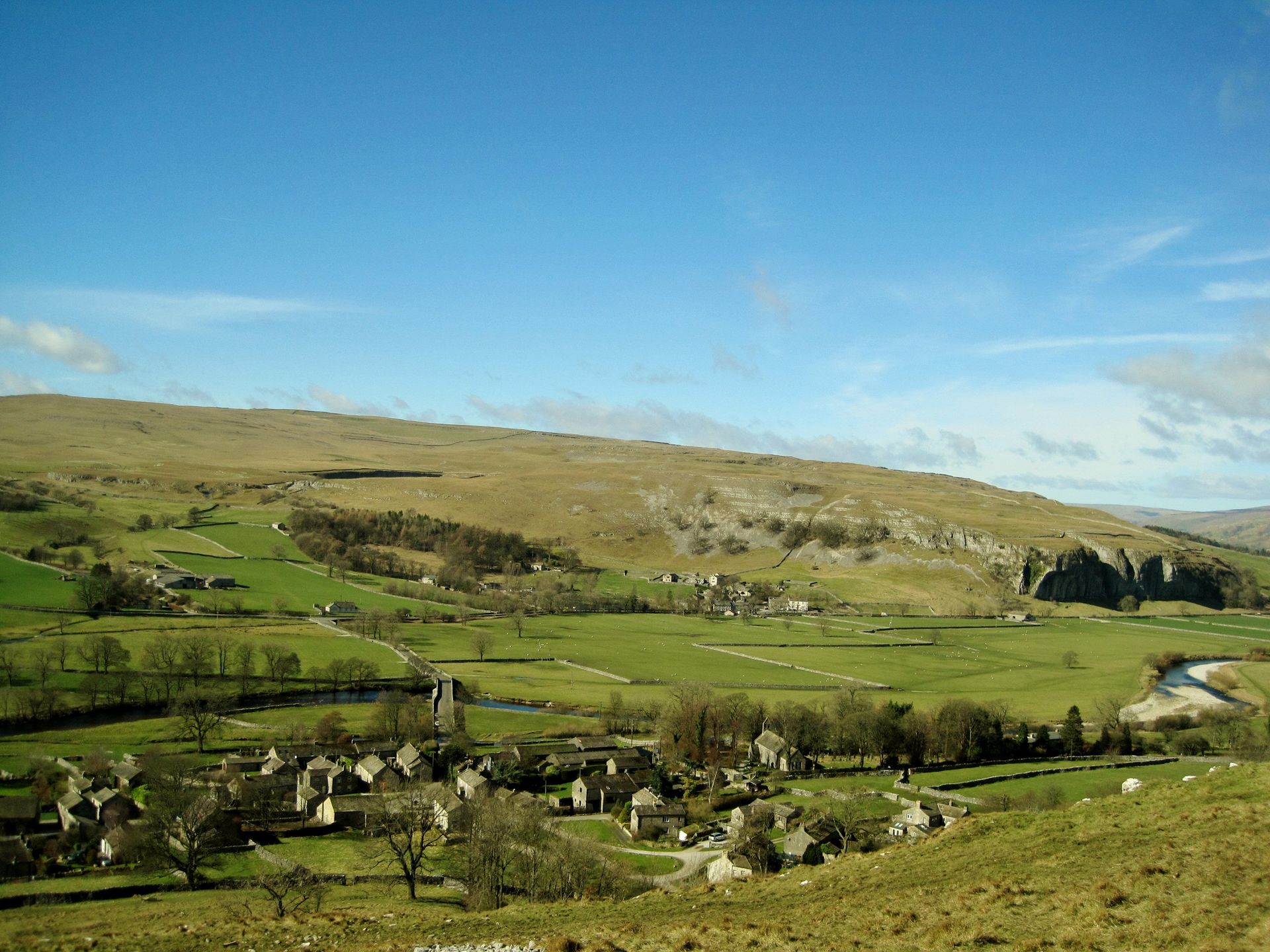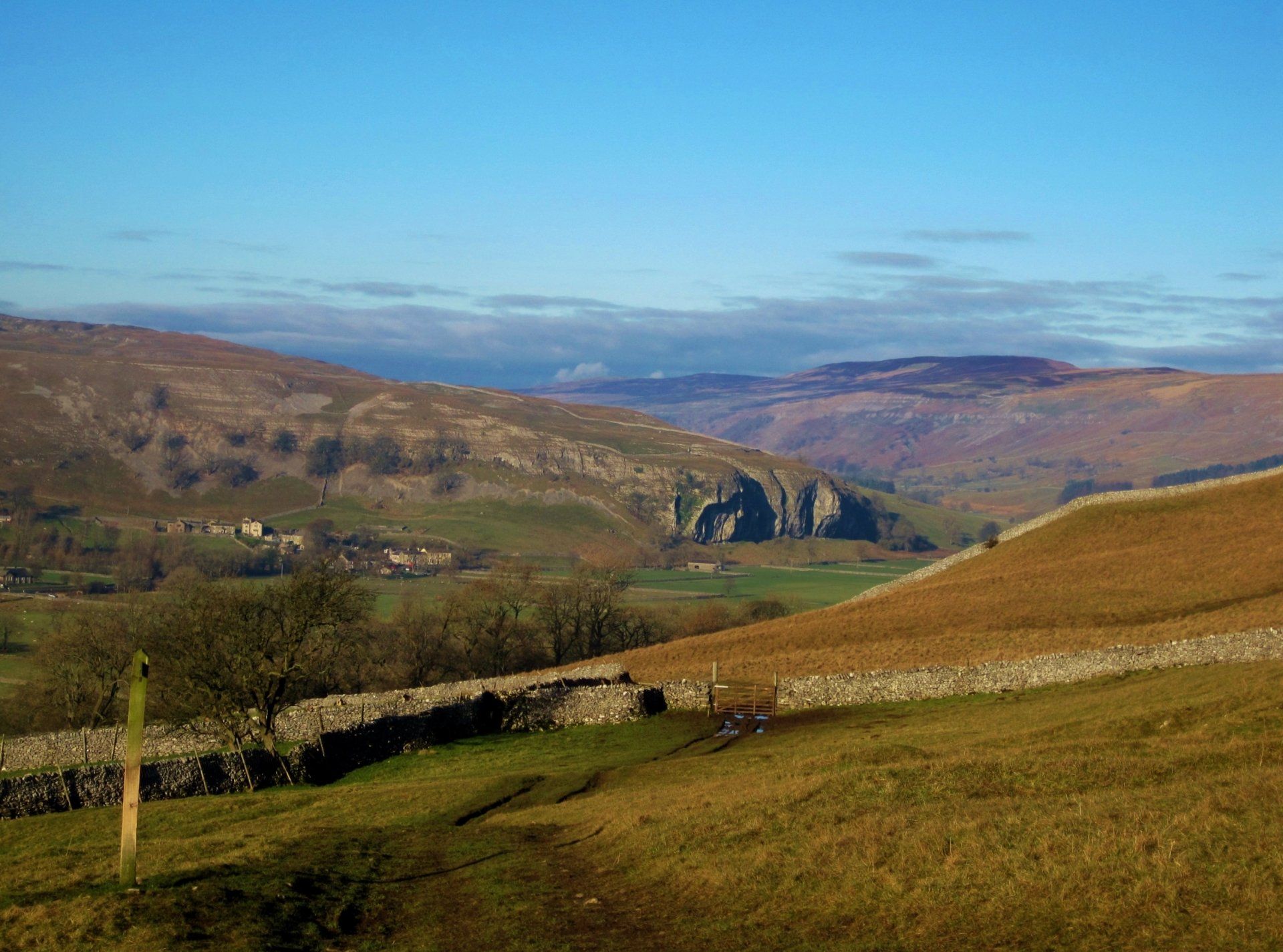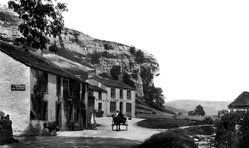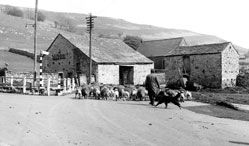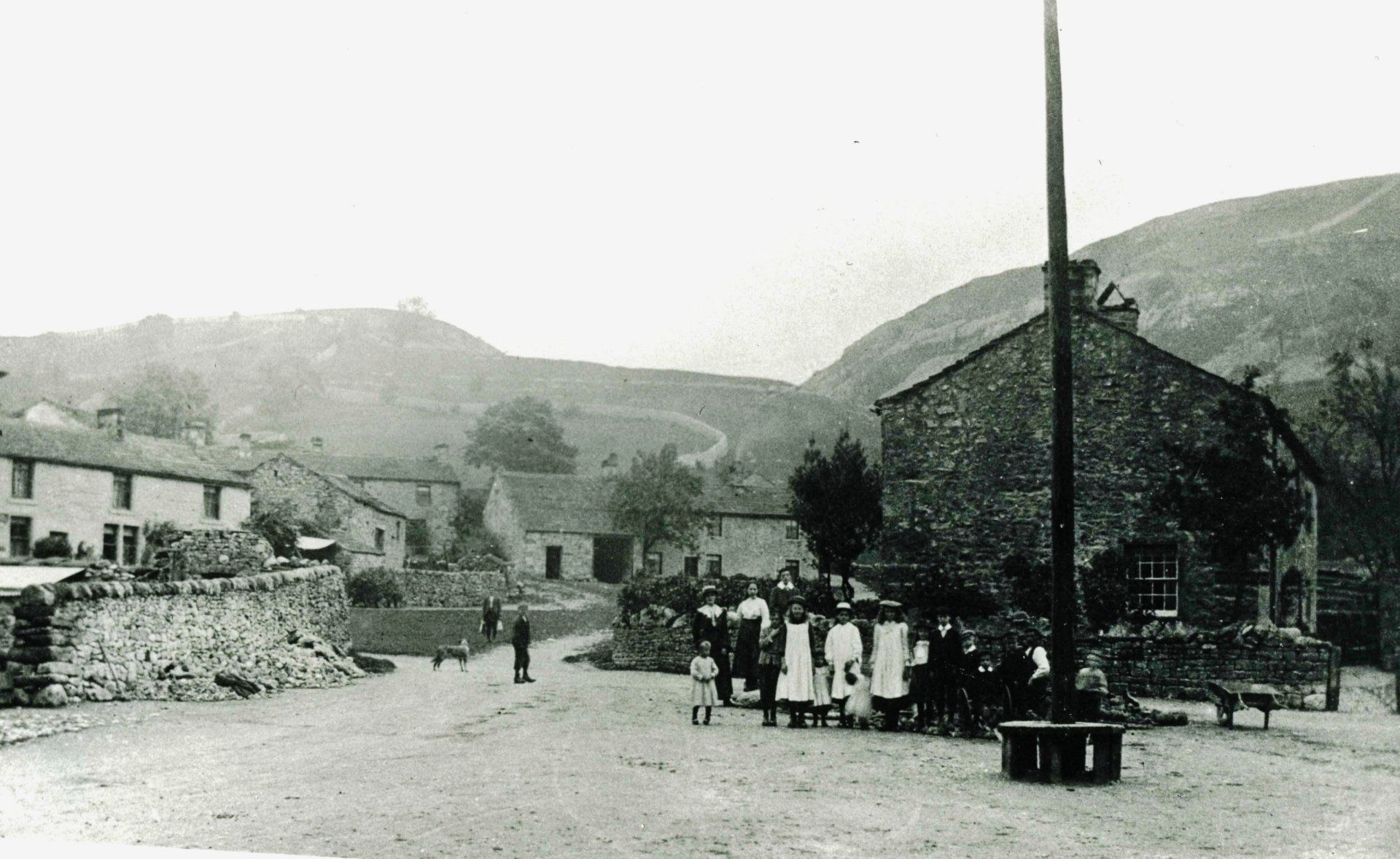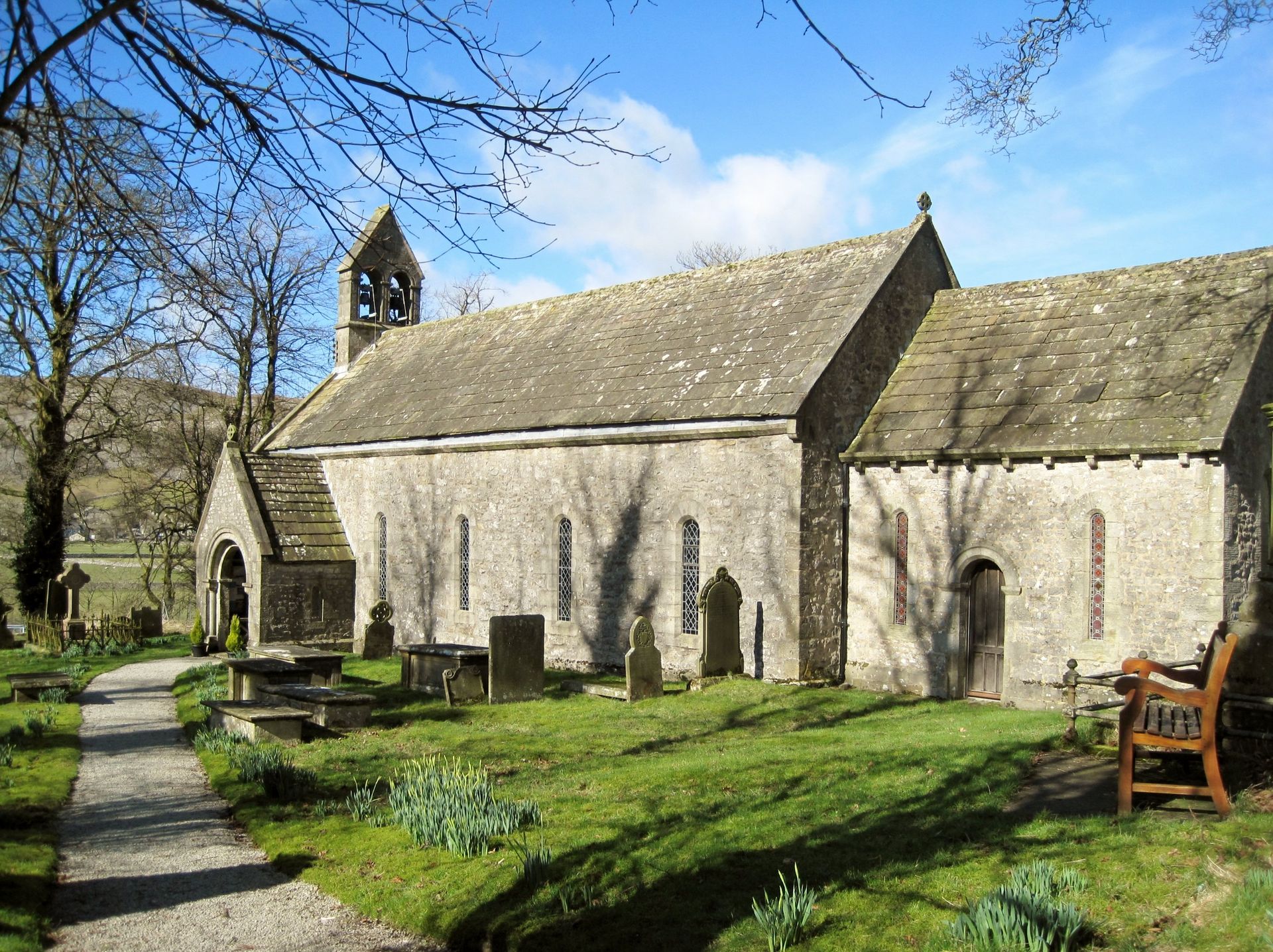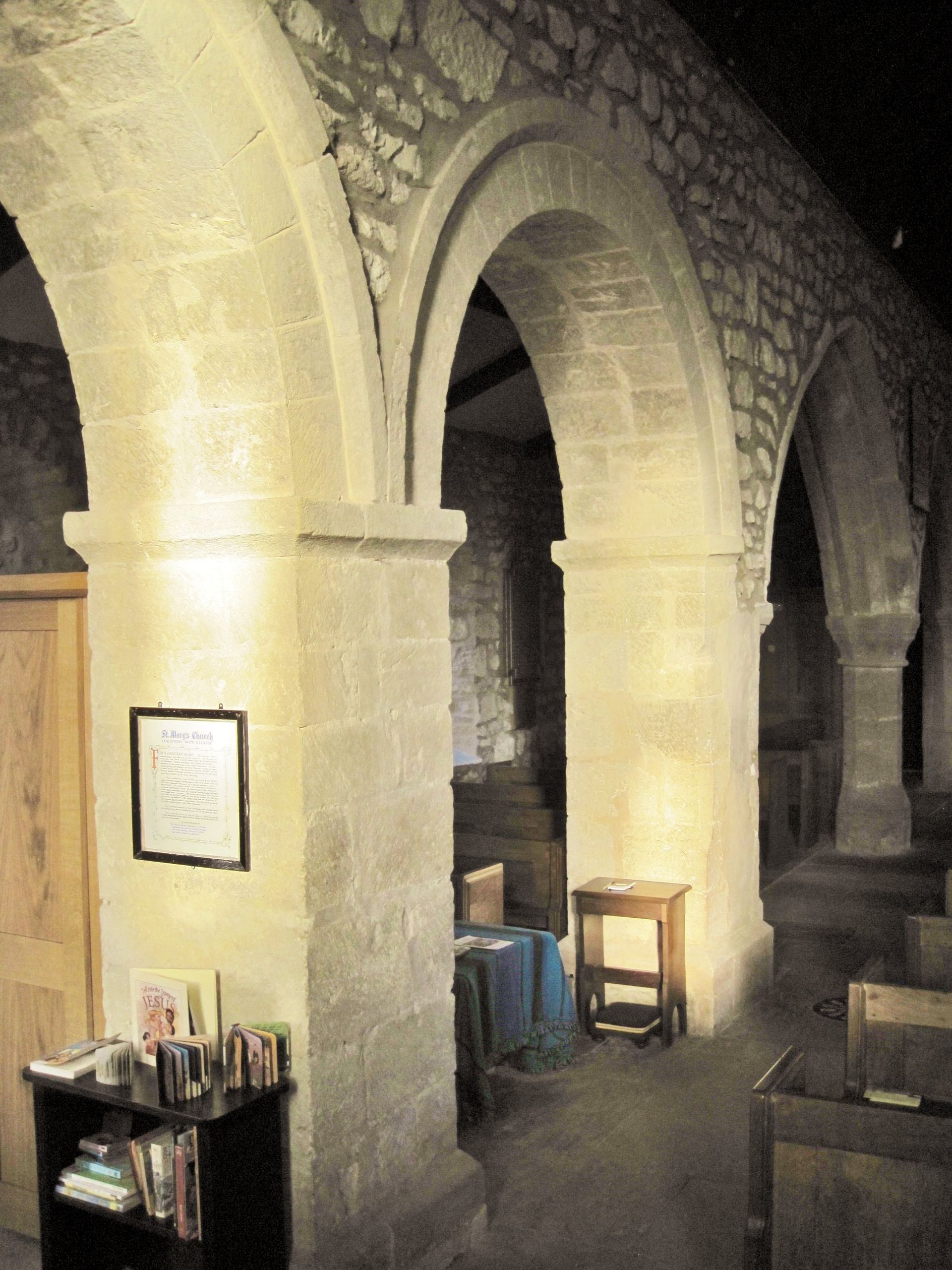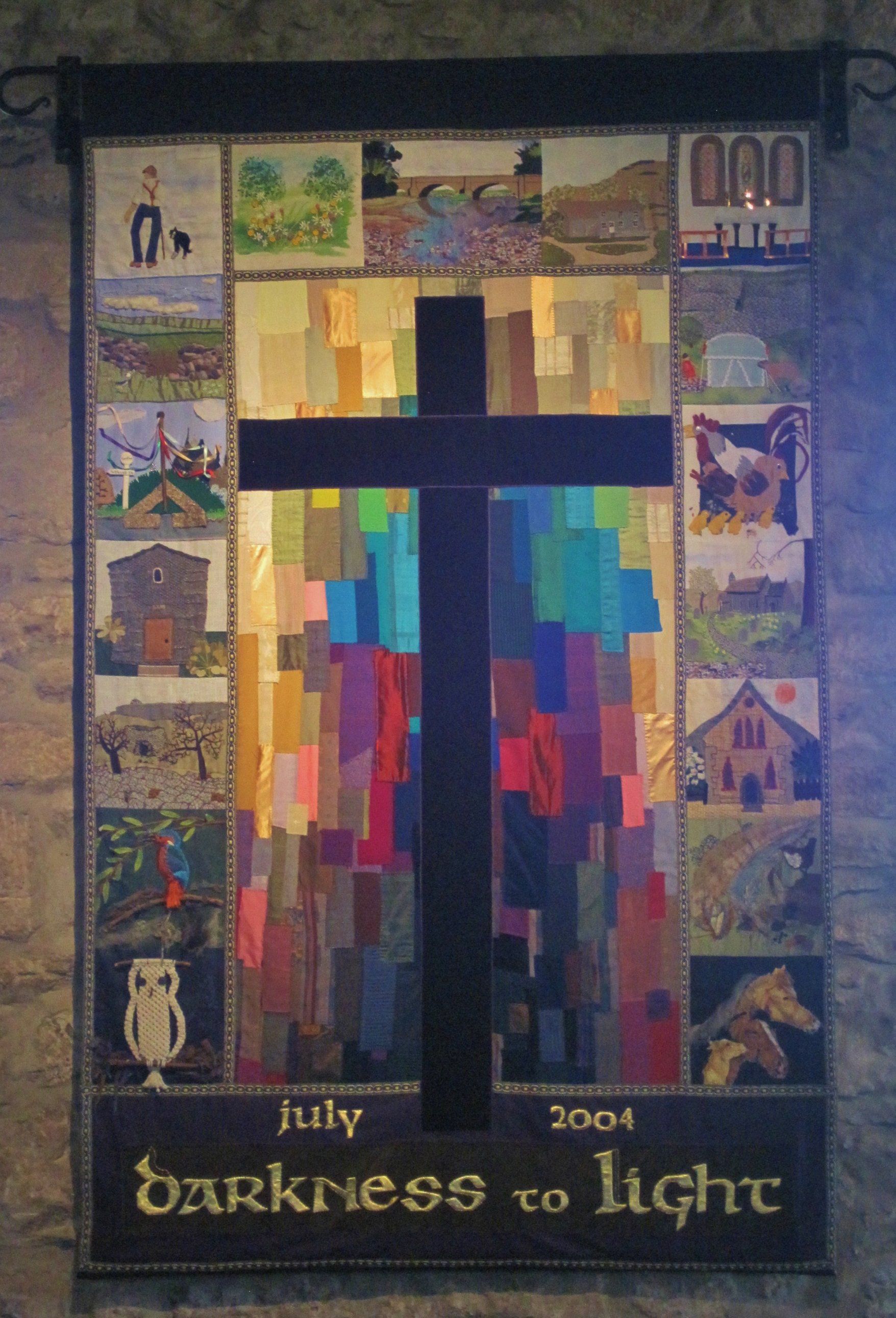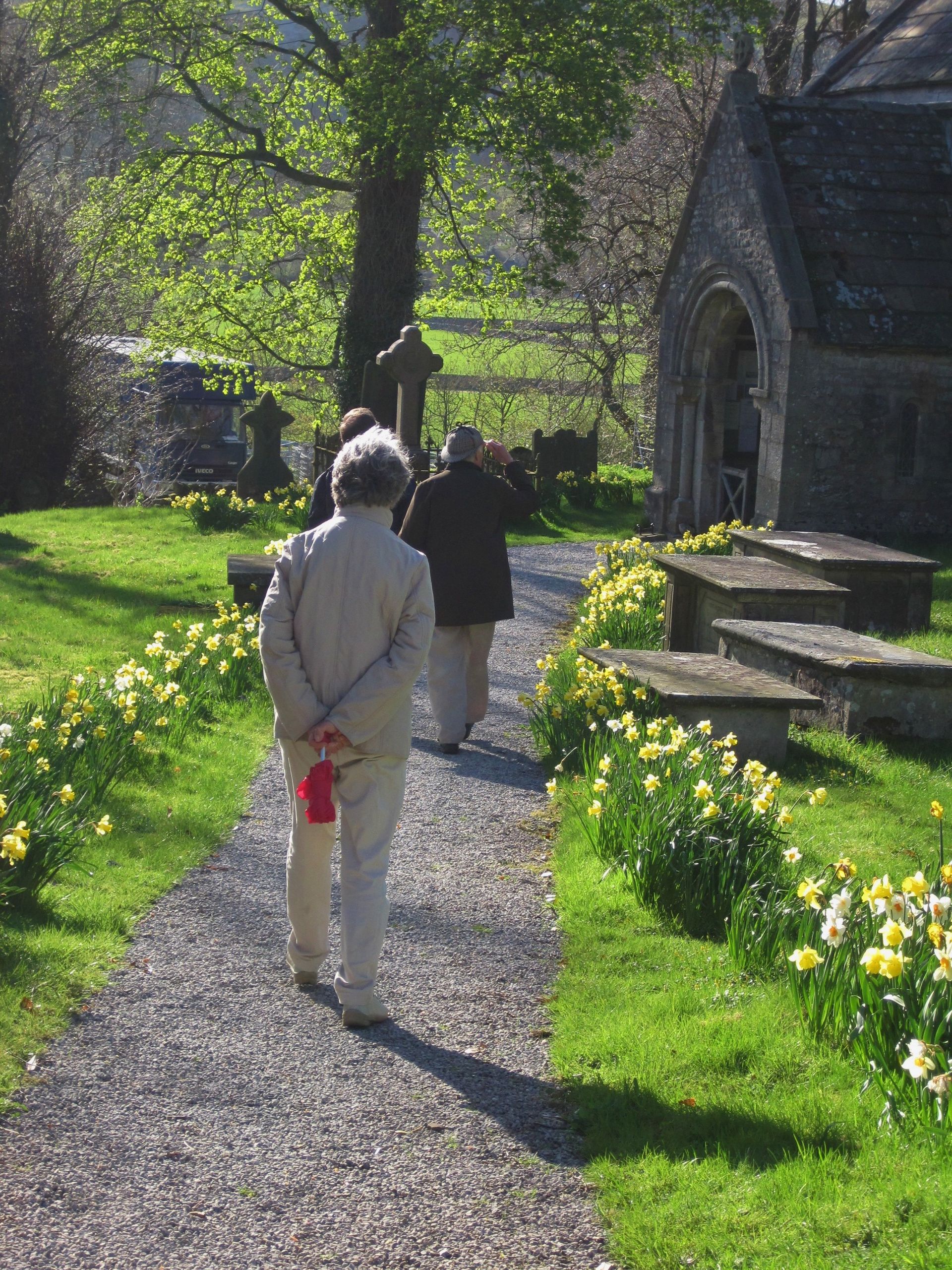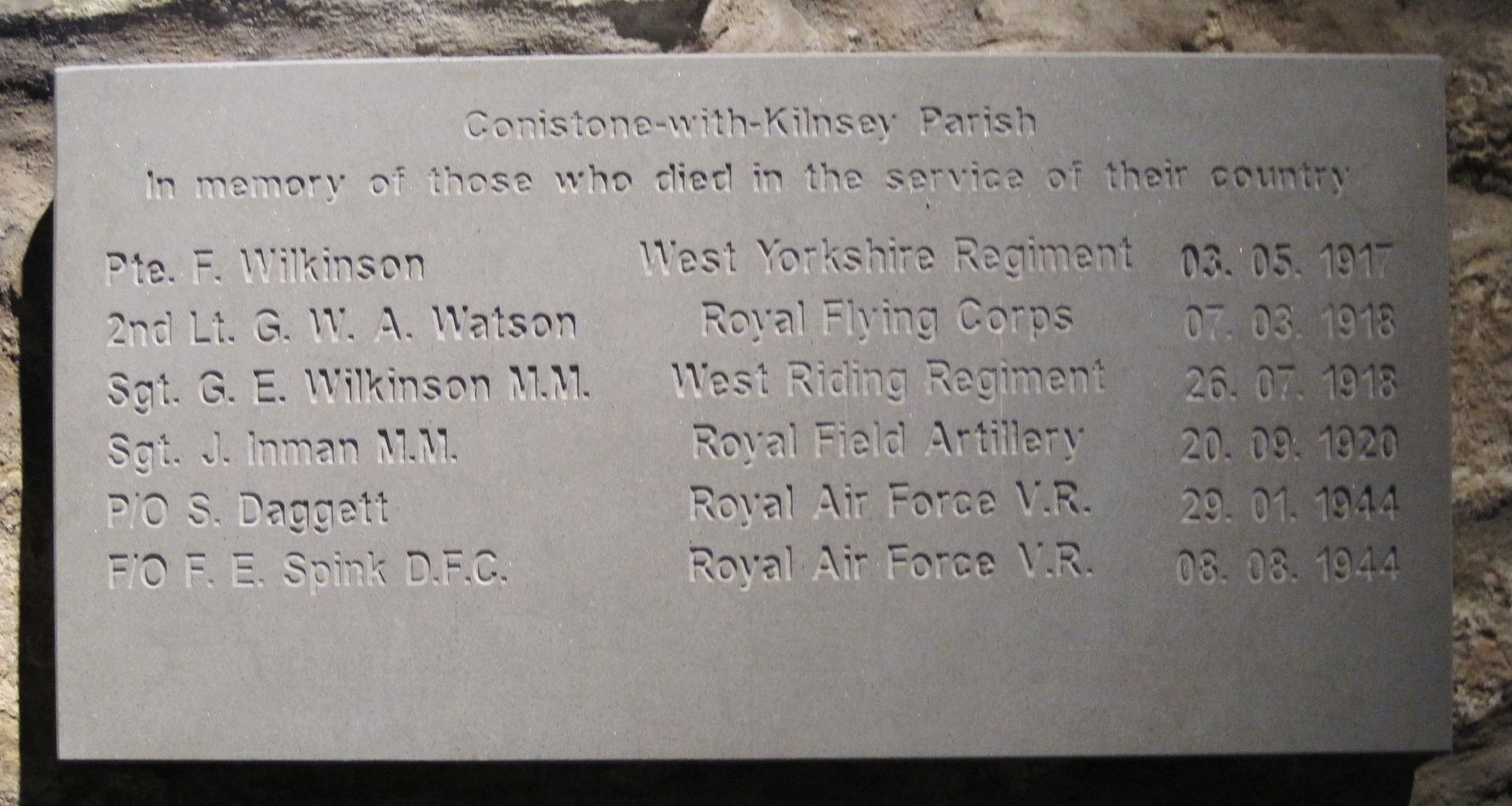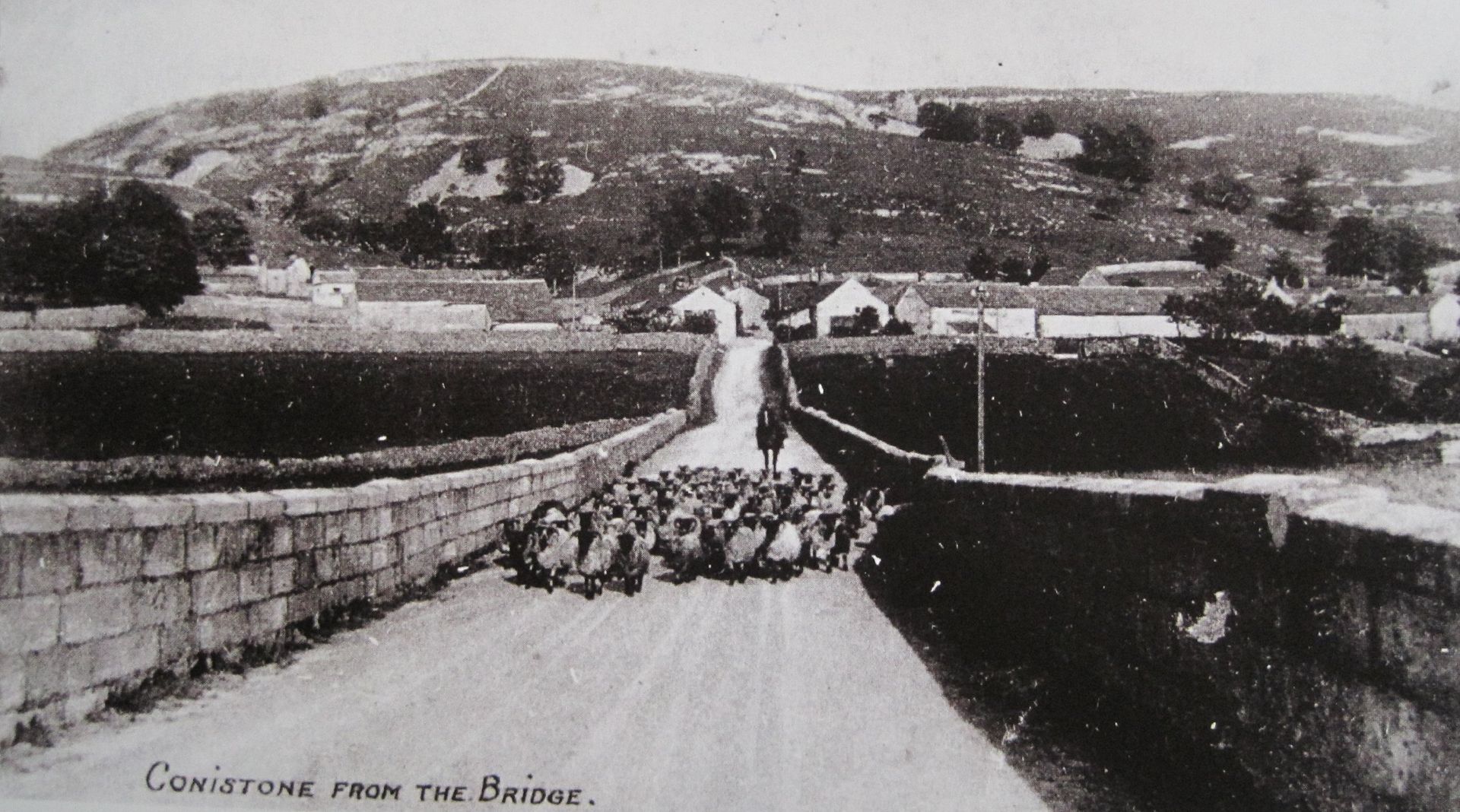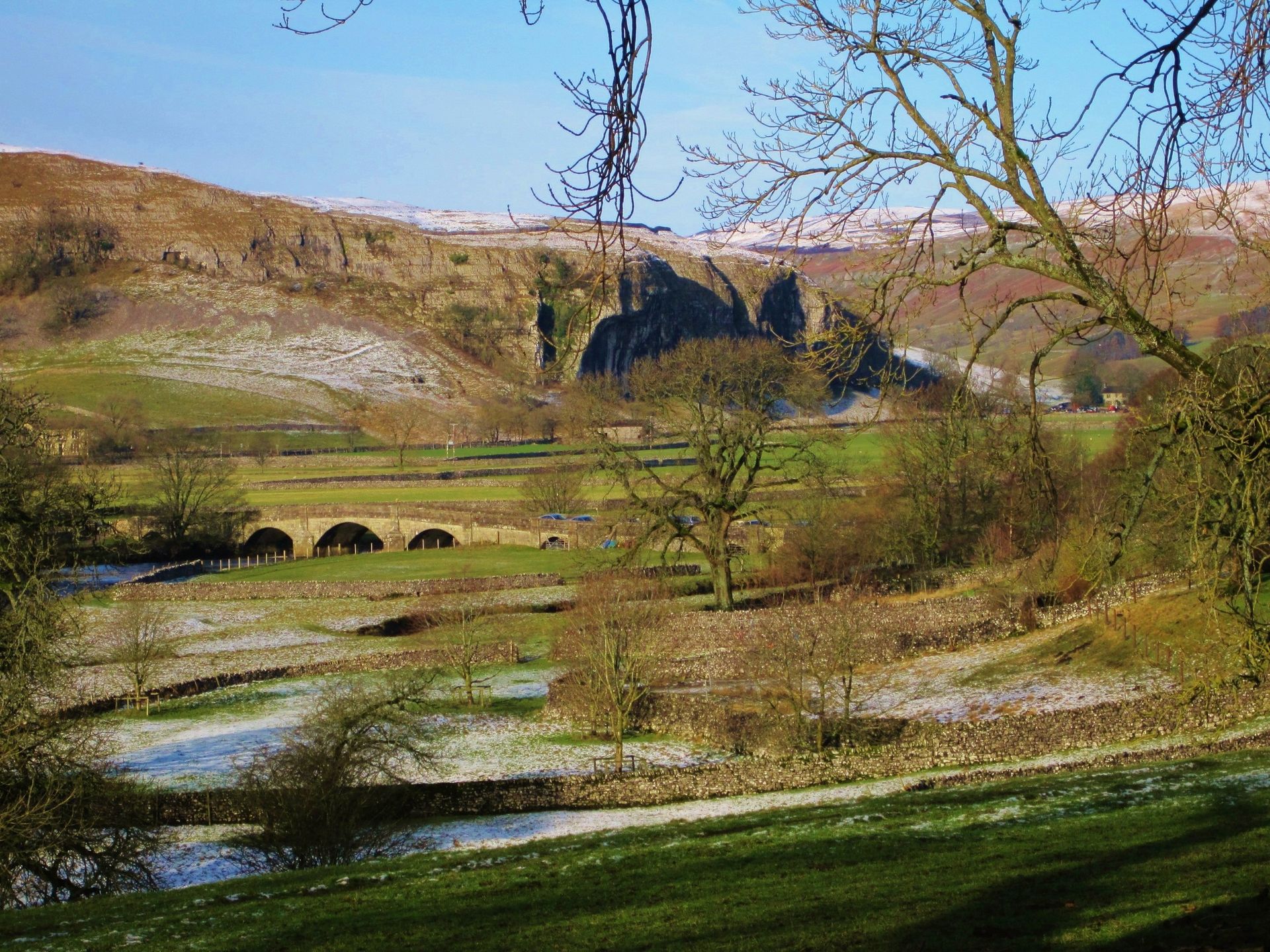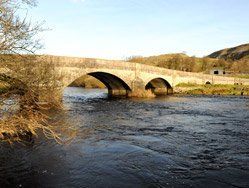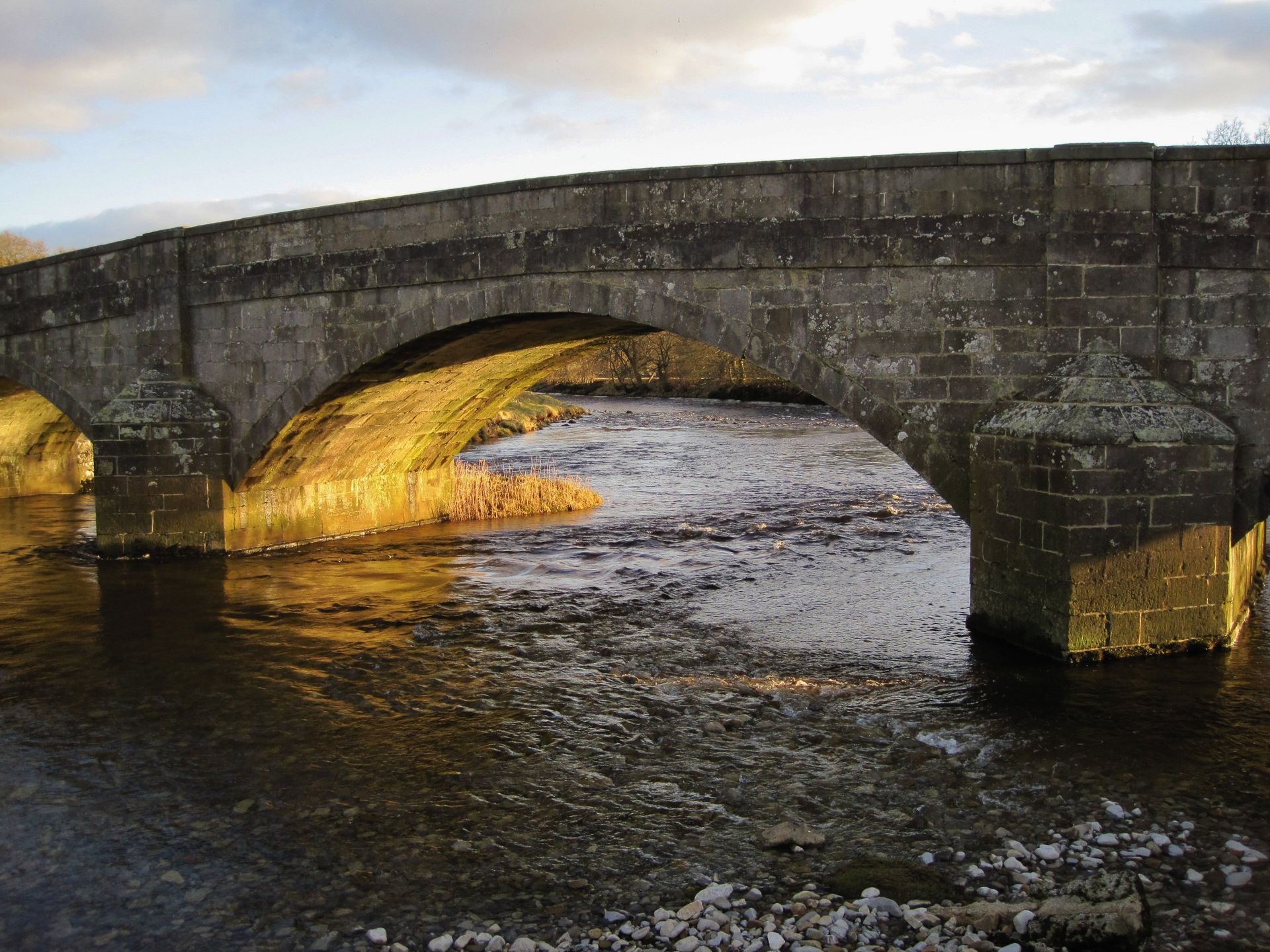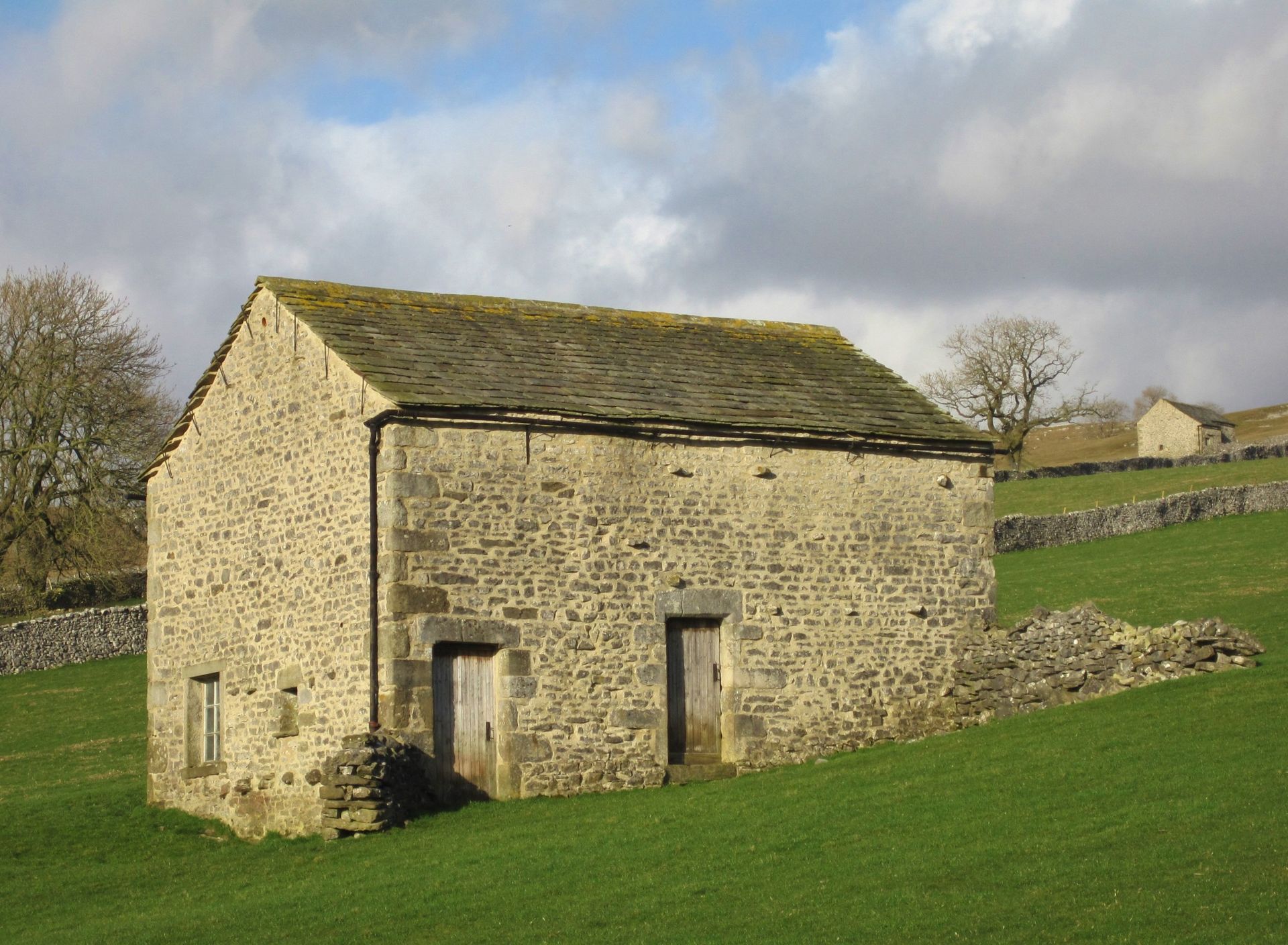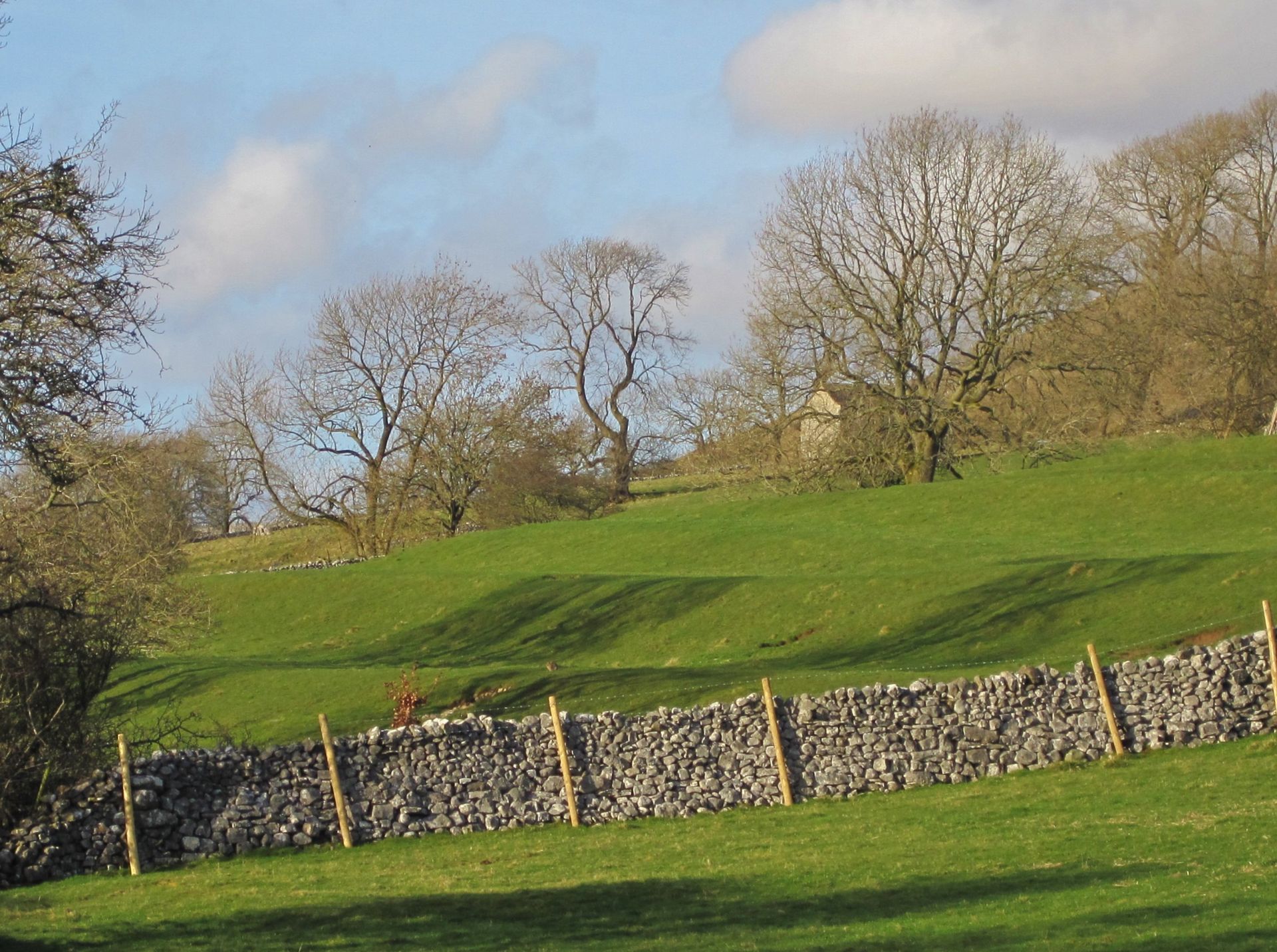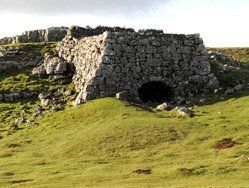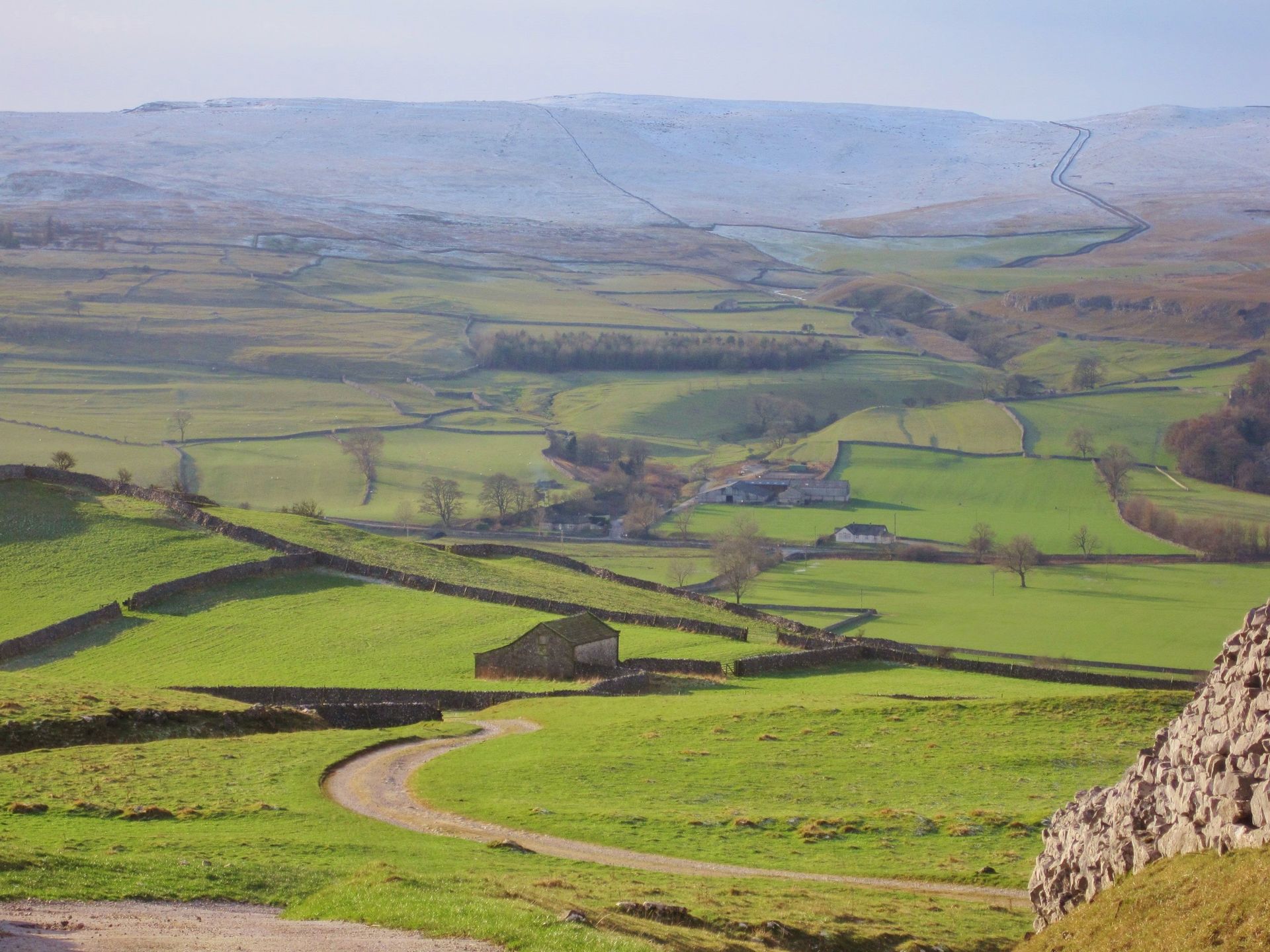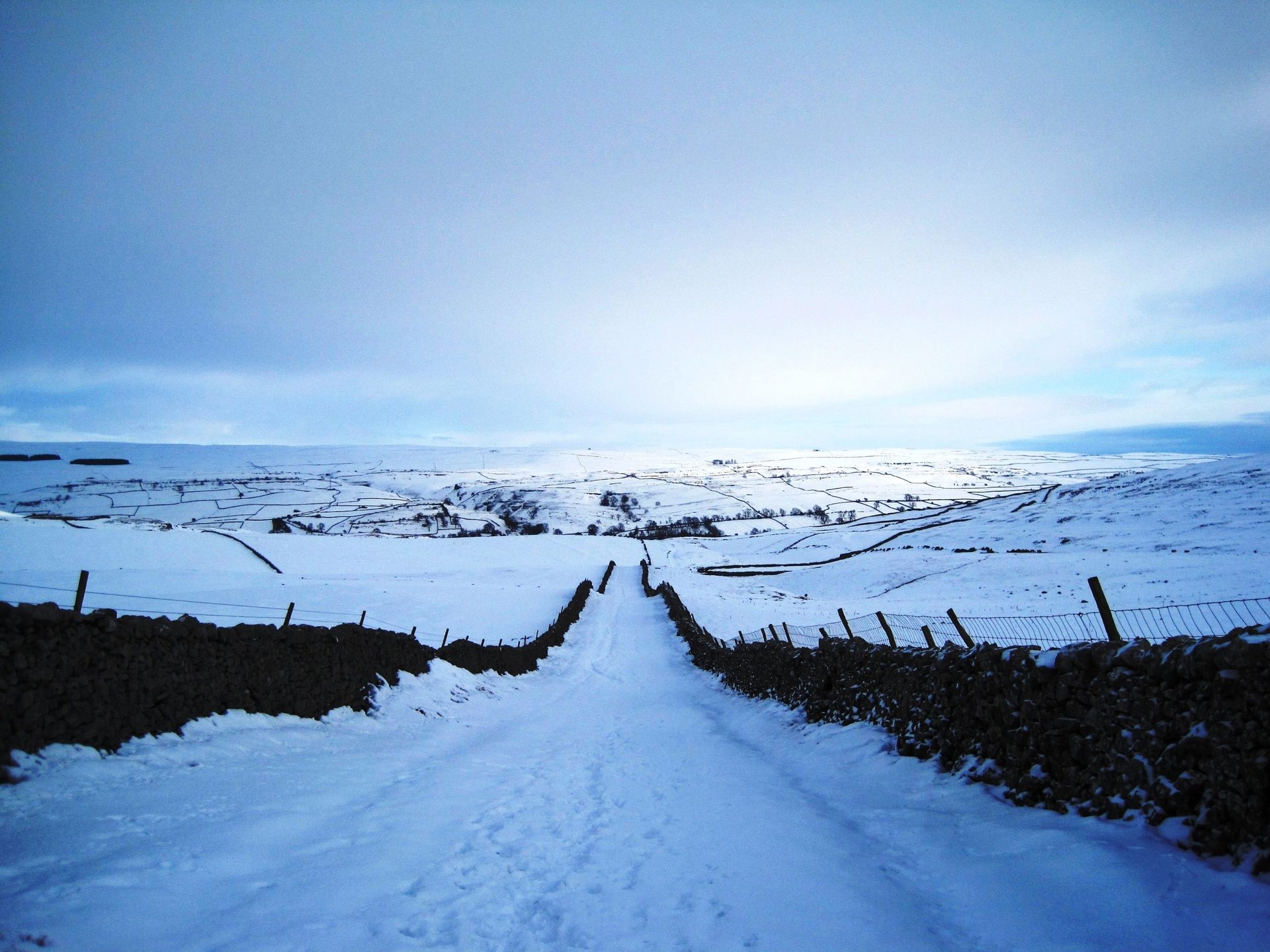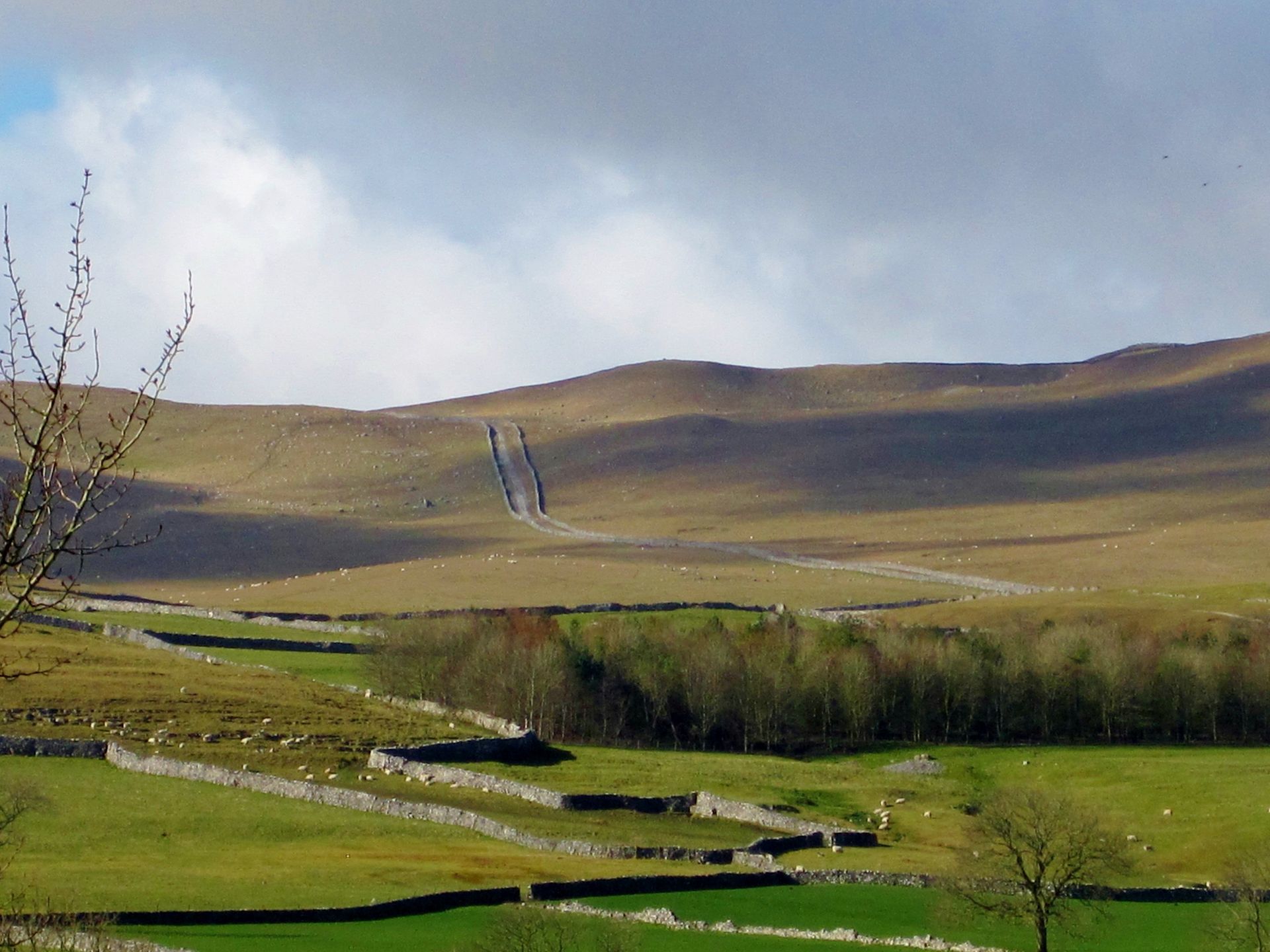History of Kilnsey and Conistone
Conistone and Kilnsey emerge as a pair of settlements within the ancient parish of Burnsall, the two together forming a township and parochial chapelry; and the formula 'Conistone with Kilnsey', which became the name of the moden parish, was in use in official records by early Tudor times .
Kilnsey
During the Middle Ages
Kilnsey
was the site of
a grange of Fountains Abbey, established by the end of the 12th century. Its exact location is not known but it was probably at or near that of the present Chapel House: most monastic granges had a chapel, and the remains or memory of it would have provided the name for its successor. The grange will have functioned as an administrative centre for the monks' large-scale sheep-farming activity on their extensive estates in Littondale and across to Malham and beyond, and Kilnsey became the scene of their great annual sheep-shearing.
The property also produced rushes for thatching, harvested from the meadows at the foot of Kilnsey Crag, and there was a limekiln for the production of building lime. After the Dissolution land-ownership was mainly focused on the estates of two gentry families, the Tennants, based at Chapel House, which they bought in 1572, and the Wades, who built, or rebuilt, Kilnsey Old Hall in 1648.
Conistone
Meanwhile
at Conistone
, where the parish chapel is situated, the lordship of the manor was in 1583 bought by a group of villagers themselves and then held in trust by them and their successors. The business of the manor was thenceforth conducted by officers - the 'bylawman' and his assistants - who were chosen from among these 'trust lords'.
Their principal duties were the management of the common pastures on the hillside behind the village
(subsequently enclosed by Act of Parliament
in 1803) and the regulation of another important aspect of the village economy, lead and coal mining on the open moor beyond.
So the leading figures in the village during the 17th and 18th centuries were the yoeman farmers, and the village retains a number of yoeman farmhouses from the 17th century. The account book of one of these
inhabitants, Richard Wigglesworth, is preserved and a transcript of it has been published by the North Yorkshire County Record Office.
St. Mary's church, Conistone
St
Mary's church at Conistone owes much of its present appearance to a modernisation of the mid 19th century, but behind this it retains some of the oldest building fabric surviving in Craven.
The two
western openings of the arcade between the nave and the aisle, with plain round arches, are Norman - that is, 12th-century - and so probably is the bowl of the font. The eastern
two, with pointed arches, are late medieval - 14th- or 15th-century.
The 19th-century work, appropriately in the Neo-Norman style, was carried out in 1846-7 under the direction of the Lancaster architects Sharpe & Paley.
The existing church was thoroughly restored, with a new roof and new windows, and the chancel, porch, bellcote and vestry were added; but unfortunately all the old fittings - box pews, gallery and 'three-decker' pulpit - were removed. In 1957 the church was re-pewed, and in 2004 a beautiful fabric wall-hanging of local scenes was created by a group of villagers.
The Register of St. Mary's Chapel at Conistone in the parish of Burnsall-in-Craven 1567-1812, edited by the Rev. William Stavert, Rector of Burnsall, and published by the Craven Herald
in 1894, can be found on the website: http://www.archive.org.
Conistone with Kilnsey War Memorial in St. Mary's Church
A
War Memorial has been erected in Conistone with Kilnsey.
In 2010 there was a discussion at the Parish Meeting about the absence of a War Memorial in Conistone with Kilnsey parish. It was agreed that a memorial
should be erected at a suitable location.
The War Memorial plaque is now in place on the west wall of St. Mary's Church, Conistone. Most of the expense has been met by the Co-operative Memorials of Nab Wood Shipley along with donations from local people.
Information about the Memorial, together with details of the six casualties from Conistone with Kilnsey parish can be viewed here...
For the map showing the places where they lived, click here.. .
If anybody has any further information about the casualties named on the memorial, (e.g. photographs or family details), please forward them to us through this website.
Other features of the historic landscape are the quite numerous signs of pre-medieval habitation in the area, the most substantial being the remains of a Roman-British settlement on the hillside south of Kilnsey; the well-preserved field-terraces, known as lynchets, north and south of Conistone which were the product of open-field arable farming in medieval times; the characteristic scatter of field barns, dating from the 17th century onwards; and the occasional field lime kilns, mainly from the period 1750-1850, built for burning limestone to make agricultural lime.
The Kilnsey and Conistone Tithe Awards
The purpose of the tithe awards, executed by Tithe Commissioners under the Tithe Act of 1836, was the replacement of traditional tithes payable in kind by money payments calculated on the basis of the price of corn. They consist of two parts, a schedule and a map. The schedule lists the landowners and occupiers of the area covered by the award and their holdings piece by piece, together with the state of cultivation and the acreage of each piece and the notional tithe charge to be paid on it. The map identifies the location of each by means of a number key. The awards were executed in triplicate, the originals being retained by the Commissioners and now deposited in the National Archives at Kew, one of the copies going to the diocese - those for York and Ripon are now in the Borthwick Institute for Archives at the University of York - and the other to the parish incumbent or churchwardens.
Kilnsey and Conistone have separate awards, Kilnsey's dating from 1844 and Conistone's from 1848: the website images are taken from the parish copies, which are now in private hands. They provide a vivid and detailed snapshot of the townships in the early Victorian period. The pattern of land-ownership differs slightly between the two. At Conistone it was quite widely dispersed, between over twenty proprietors, in holdings of widely varying size, from 400 acres down to single figures; whereas at Kilnsey there was only half the number of owners, with three larger holdings - the largest the Chapel House estate at nearly 1000 acres - but then a similar spread downwards in size. Most land was tenanted, owner-occupiers forming only a small minority. As to the state of cultivation, unsurprisingly almost all the agricultural land was pasture or meadow, with only six acres at Conistone and five at Kilnsey in use as arable. But the schedule also lists even the smallest, non-titheable holdings, consisting of just a house and garden; and all, together with the field-names in use at the time, are identifiable by means of the keys and maps, which are evidently more detailed and accurate than some. Also specified and quantified are the lands belonging to the townships, and at Conistone the roads, the 'waste land' which is the village green, and the commons, principally Conistone Moor: at Kilnsey the moor had been enclosed and divided amongst the individual owners. A striking feature of the Kilnsey map is the depiction of the woods at Chapel House as a pleasure ground, with walks or rides cut through them.
The Account Books of Richard Wigglesworth of Conistone and his sons 1683-1719
Transcribed and edited by Peter Leach and published by the North Yorkshire County Record Office, this is now available priced £6, either from Peter Leach at Leyland House, Conistone (email: leach.leyland@btinternet.com , telephone: 01756 752571), or from the Record Office at Northallerton.

